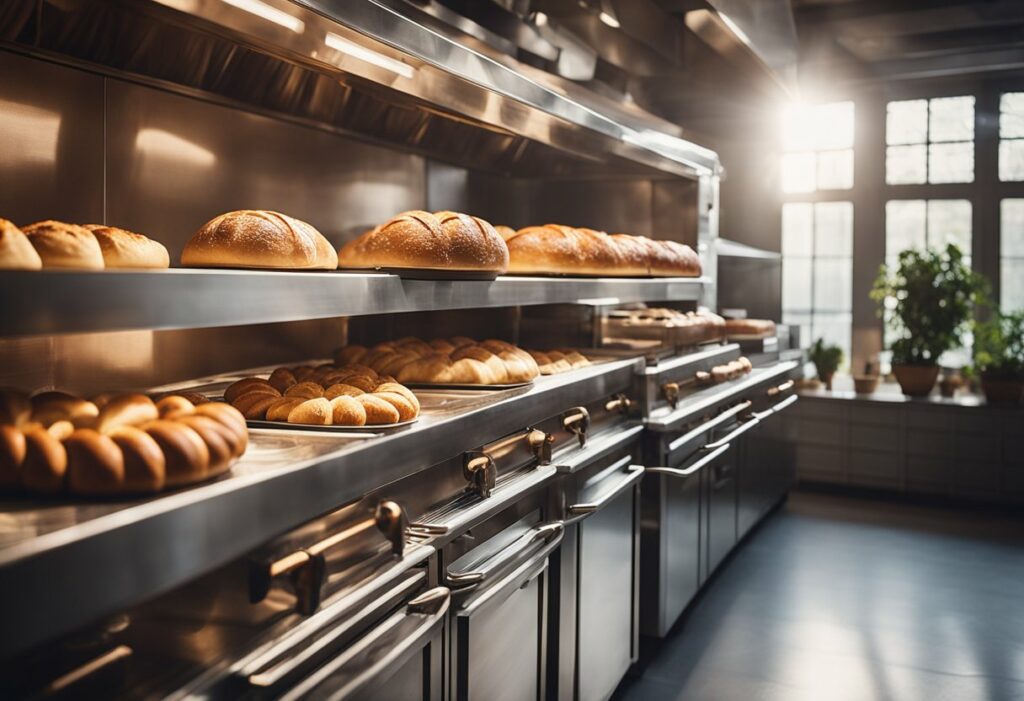Bakery Kitchen Design: Creating a Functional and Inviting Space
If you’re planning to open a bakery, designing the kitchen layout is one of the most important steps you’ll take. The design of your bakery kitchen can have a significant impact on the efficiency of your operations and the quality of your baked goods. A well-designed bakery kitchen can help you maximize space, streamline workflow, and increase productivity.
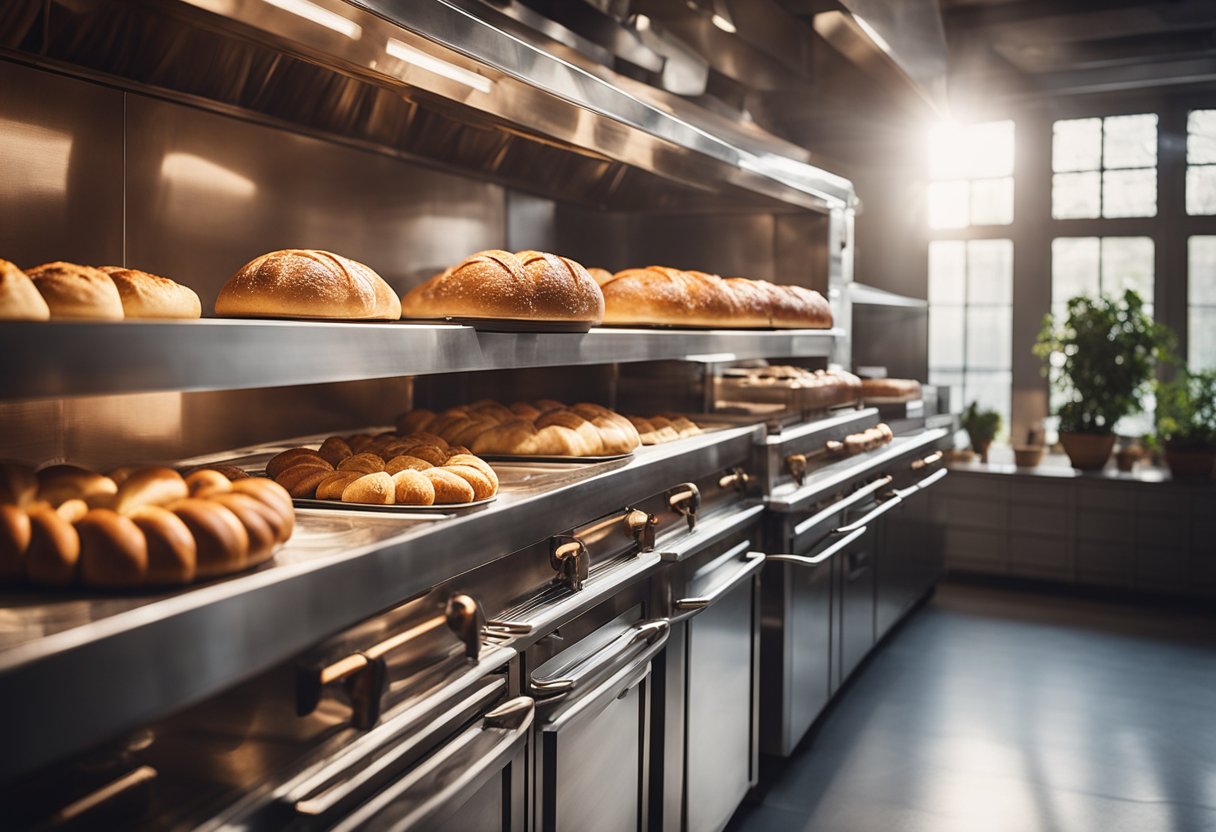
Designing the layout of your bakery kitchen involves more than just choosing the right equipment and placing it in the right location. You’ll also need to consider factors such as the flow of traffic, the placement of workstations, and the location of storage areas. A good bakery kitchen design will ensure that your staff can move efficiently around the kitchen, reducing the risk of accidents and increasing productivity.
When designing your bakery kitchen, you’ll also need to choose the right equipment and features. Essential bakery equipment includes ovens, mixers, proofers, and refrigerators. You’ll also need to consider features such as ventilation, lighting, and flooring. The right equipment and features can help you create a safe, efficient, and hygienic workspace that meets the needs of your staff and customers.
Key Takeaways
- Designing the layout of your bakery kitchen involves more than just choosing the right equipment and placing it in the right location.
- A good bakery kitchen design will ensure that your staff can move efficiently around the kitchen, reducing the risk of accidents and increasing productivity.
- Essential bakery equipment includes ovens, mixers, proofers, and refrigerators. You’ll also need to consider features such as ventilation, lighting, and flooring.
Designing the Bakery Layout
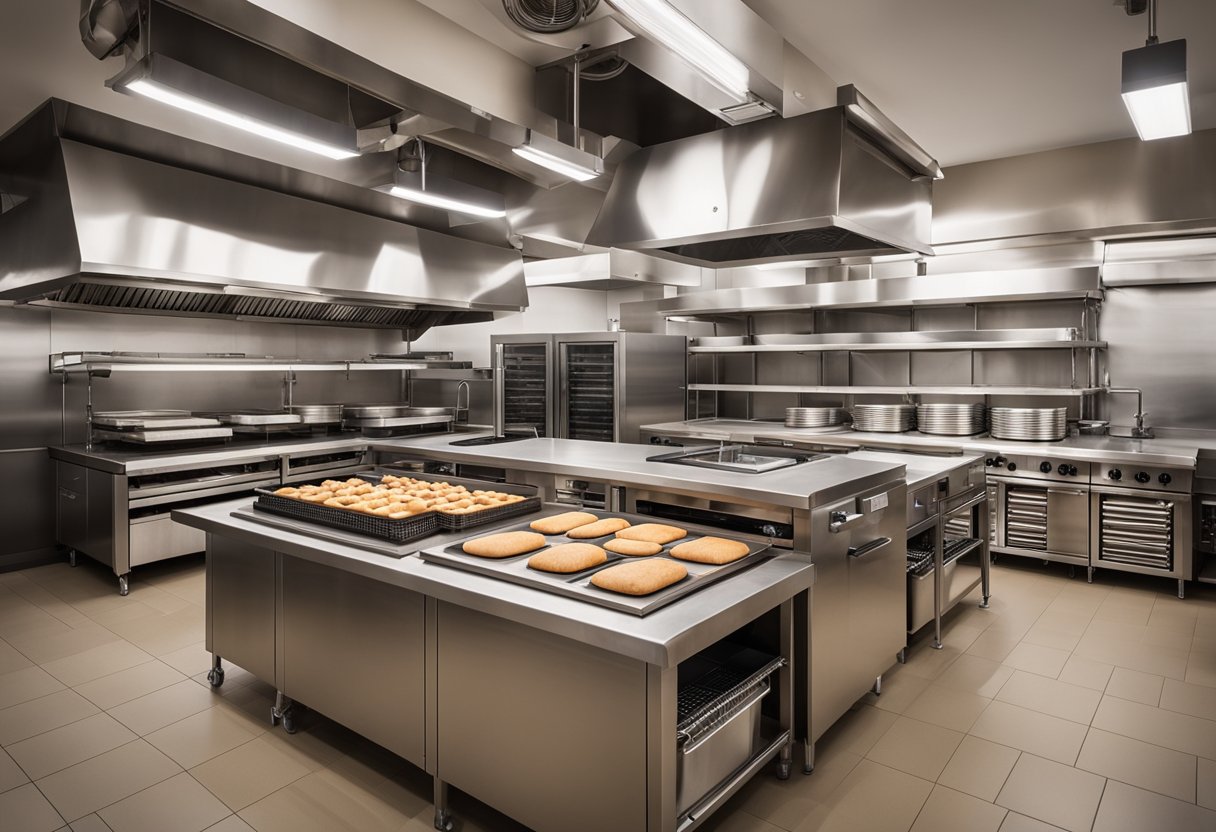
Designing the layout of your bakery is an exciting process that requires careful planning to ensure that your space is both functional and aesthetically pleasing. Here are some essential factors to consider when designing your bakery layout.
Optimising the Floor Plan
The floor plan of your bakery is critical to the success of your business. You want to ensure that your space is optimised for efficiency and productivity while also providing a comfortable and enjoyable experience for your customers. Consider the size and shape of your space, and how you can best utilise it to maximise your production capacity.
Zoning for Efficiency
Zoning your bakery is crucial to ensure that your space is used efficiently. You need to consider the placement of your production areas, display cases, staff areas, waiting areas, restrooms, dining room, takeaway, and outdoor seating. Zoning your bakery in this way will help to create a seamless flow of customers and staff, reducing the risk of congestion and increasing customer satisfaction.
Incorporating Design Elements
Incorporating design elements into your bakery layout is essential to create a visually appealing space that reflects your brand. Bright colours, marble, quartz, tile, mirrors, and other design elements can be used to create a unique and inviting atmosphere that will attract customers and keep them coming back.
Considering Human-Centered Design
Human-centered design is a crucial aspect of designing a bakery layout that is both functional and comfortable for your customers. You need to consider the seating capacity, the placement of doors, windows, and emergency exits, as well as legal requirements such as maximum occupancy. This will ensure that your space is safe, comfortable, and enjoyable for your customers.
Planning for Expansion
When designing your bakery layout, it’s essential to plan for future expansion. Consider your long-term goals and how your space will need to adapt as your business grows. This will help you to avoid costly renovations down the line and ensure that your space remains functional and efficient.
In conclusion, designing the layout of your bakery requires careful planning and consideration. By optimising your floor plan, zoning for efficiency, incorporating design elements, considering human-centered design, and planning for expansion, you can create a space that is both functional and aesthetically pleasing, providing an enjoyable experience for your customers while maximising your production capacity.
Essential Bakery Equipment and Features
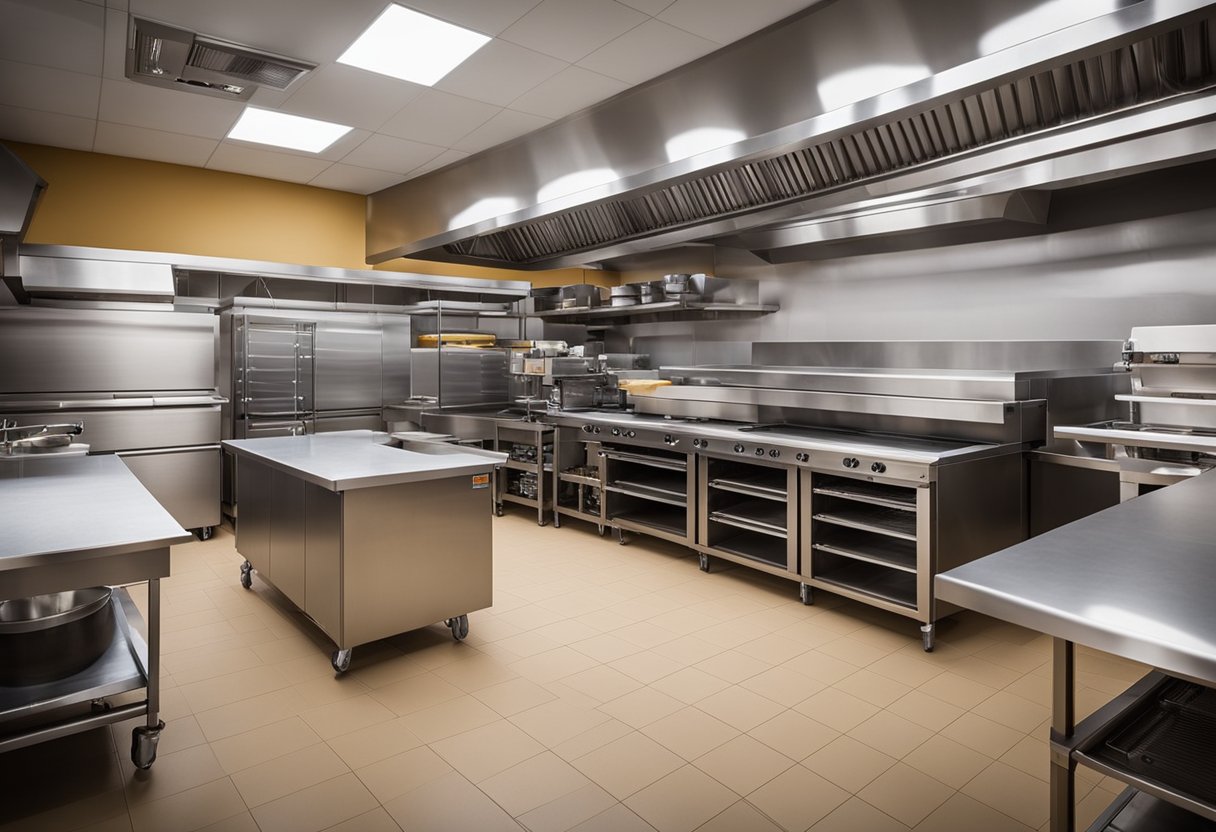
As a baker, you need to have the right equipment and features in your bakery to ensure that you can craft your baked goods to perfection. Here are the essential features and equipment that you should consider when designing your bakery kitchen.
Selecting the Right Equipment
Choosing the right equipment for your bakery is crucial to your success. You need to select equipment that is durable, efficient, and easy to use. Some of the essential equipment you need includes double ovens, mixing bowls, measuring cups, measuring spoons, and rolling carts. You should also consider investing in specialised baking tools and supplies such as piping bags, cake pans, and pastry brushes.
Storage Solutions and Workstations
Storage solutions and workstations are critical to the success of your bakery. You need to have enough storage space for your dry ingredients, supplies, and tools. Consider using open shelves, drawers, and tray storage to keep everything organized. You should also have enough countertop space to work on, and a rolling cart to move your supplies and tools around.
Specialised Baking Tools and Supplies
Specialised baking tools and supplies are essential for crafting your baked goods to perfection. You need to have a variety of tools and supplies such as sugar, butter, and dry ingredients. You should also have a built-in step stool to reach high shelves and a collection of cookbooks to inspire your creativity.
Integrating Technology
Integrating technology into your bakery can help you streamline your operations and improve your customer service. Consider investing in a POS system to manage your sales and inventory. You should also have a cashier station and a POS station to make it easy for your customers to pay for their purchases. Display cases are also essential for showcasing your baked goods.
Crafting the Customer Service Area
The customer service area is where you interact with your customers, so it needs to be inviting and welcoming. Consider using warm colours and comfortable seating to create a cosy atmosphere. You should also have a display case to showcase your baked goods and a built-in step stool to help your customers reach high shelves.
Designing Staff-Only Spaces
Your staff needs a break room and an office to rest and recharge. Consider designing a break room with comfortable seating, a fridge, and a microwave. You should also have an office with a computer and a printer to manage your paperwork.
In conclusion, having the essential bakery equipment and features is crucial to your success as a baker. By selecting the right equipment, storage solutions, and workstations, integrating technology, and crafting the customer service area, you can create a bakery that is efficient, organised, and welcoming.
Frequently Asked Questions
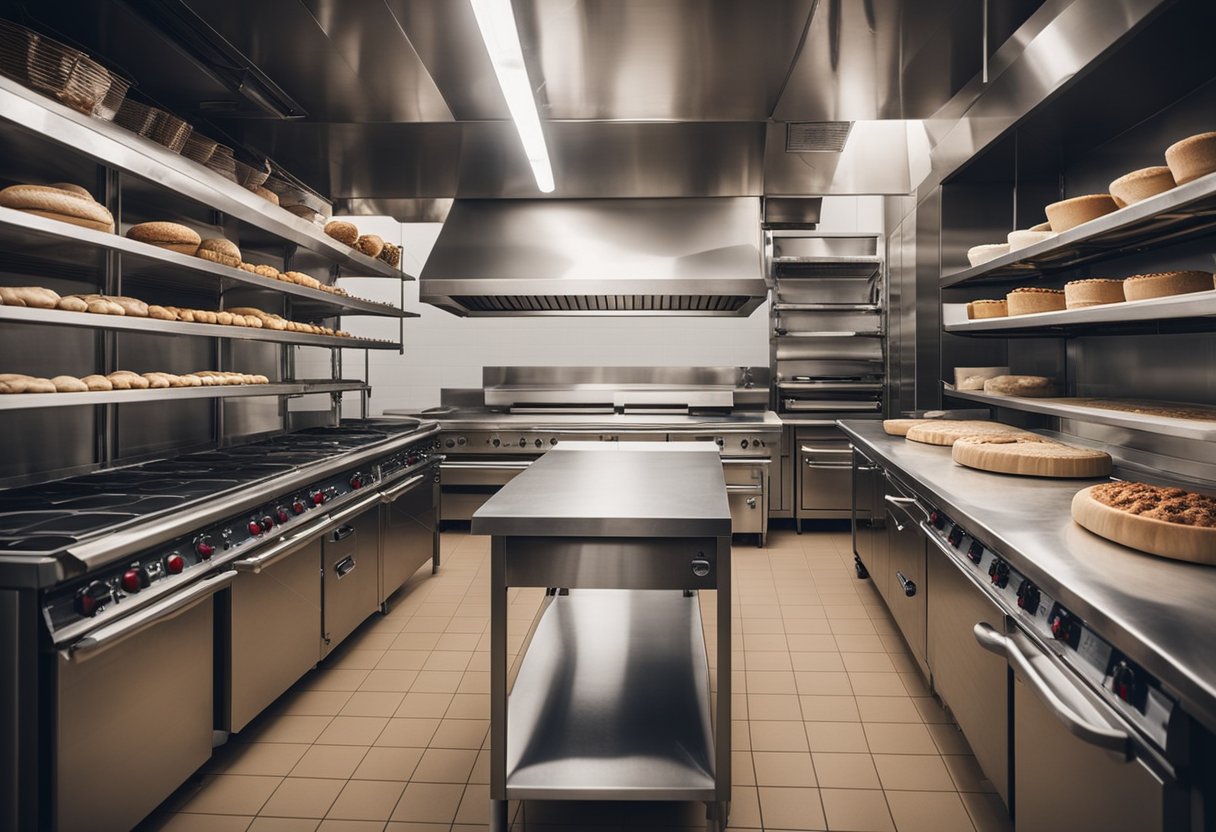
How can one optimise space in a small bakery kitchen?
If you have a small bakery kitchen, you need to optimise the space to ensure that it is functional and efficient. One way to do this is by using vertical space. Install shelves and racks on the walls to store your baking supplies and equipment. You could also use rolling carts that can be easily moved around the kitchen when needed.
What are the essential features of a modern bakery kitchen design?
A modern bakery kitchen design should have ample counter space, good lighting, and proper ventilation. The counters should be made of durable materials like stainless steel for easy cleaning. The lighting should be bright to ensure that you can see what you are doing, and the ventilation system should be powerful enough to remove excess heat and humidity.
Could you suggest some creative ideas for a bakery kitchen layout?
There are many creative ideas for bakery kitchen layouts. One idea is to have a separate area for mixing and another area for baking. You could also have a designated area for cooling and decorating. Another idea is to have a central island that can be used for preparation and storage.
What equipment is indispensable for a fully functional bakery kitchen?
A fully functional bakery kitchen should have a commercial oven, a mixer, a refrigerator, a freezer, and a proofer. Other essential equipment includes baking sheets, measuring cups and spoons, mixing bowls, and a scale.
What considerations should be taken into account when designing a bakery kitchen floor plan?
When designing a bakery kitchen floor plan, you should consider the flow of the kitchen. The layout should be designed to ensure that there is enough space to move around freely. You should also consider the placement of equipment and storage areas to ensure that they are easily accessible.
What are the latest trends in bakery kitchen design for commercial spaces?
The latest trends in bakery kitchen design for commercial spaces include open kitchens, where customers can see the baking process, and eco-friendly designs that use sustainable materials. Another trend is the use of smart technology, such as ovens that can be controlled remotely.

